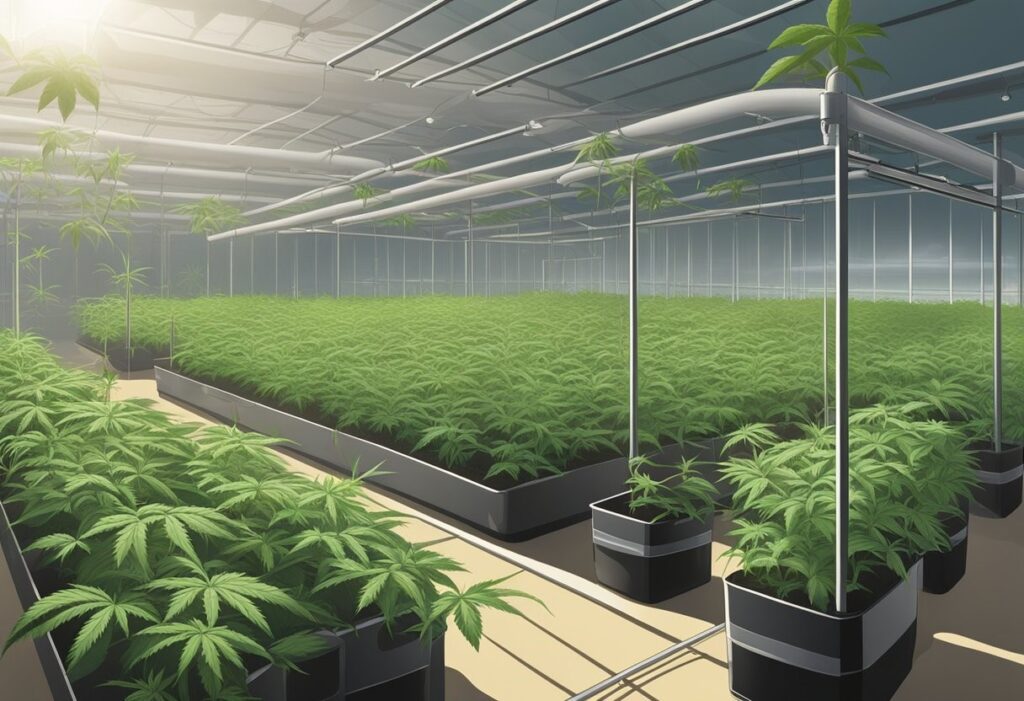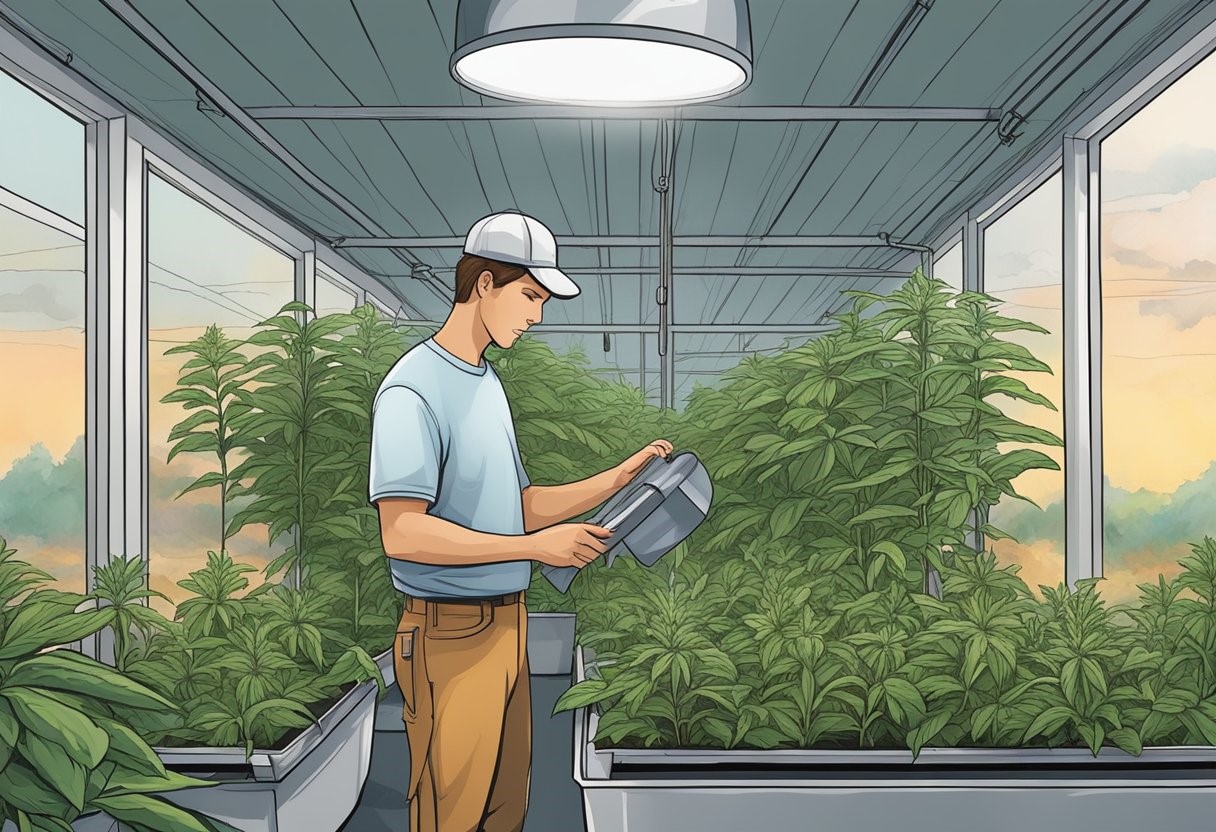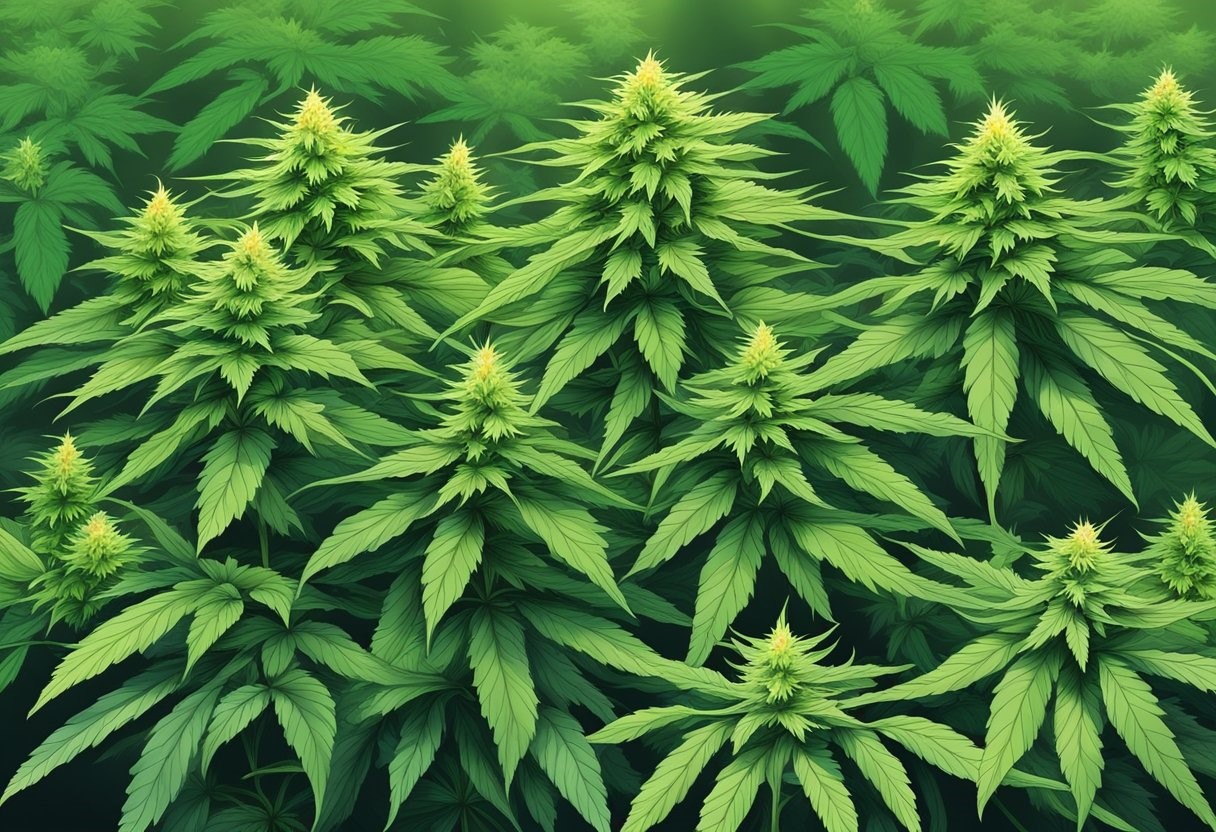
When you embark on the cultivation of White Widow, a balanced hybrid cannabis strain, you’ll need to begin with quality seeds and understand the growth requirements. This section will help you select the right seeds and establish an environment that promotes healthy plant development.
Selecting high-quality seeds is crucial for your White Widow grow operation. You can opt for feminized seeds to ensure that all your plants will be female, which are the ones that produce the buds you’re after. White Widow is available as both regular and auto-flowering seeds. If you’re a novice grower, the auto-flowering variety might be a better choice as it tends to be less labor-intensive and has a shorter growth cycle, although it generally results in a smaller yield.
White Widow’s growth patterns exhibit traits of both Indica and Sativa origins. Throughout the growth cycle, maintaining optimal conditions is essential for plant health and potent bud development. When germinating seeds, the environment should be warm, with temperatures roughly around 75-80°F. Humidity levels should be monitored closely, kept at 60-70% for ideal germination, and then adjusted as the plants mature.
During the vegetative stage, your plants will require rich soil and plenty of nutrients to develop strong roots and healthy leaves. Be mindful of the nitrogen, phosphorus, and potassium levels, as they are vital for cannabis growth. Proper lighting is critical – if you’re growing indoors, gradually increase light intensity to avoid stress on the young seedlings.
In summary, starting with the proper seeds and providing a harmonious growth environment will set the foundation for a fruitful White Widow cultivation experience.

To maximize the potential of your White Widow cannabis plants, understanding the specific growing requirements for both indoor and outdoor setups is crucial. Each environment presents its own set of challenges and benefits that can significantly affect your yield, potency, and overall plant health.
When growing White Widow indoors, you’ll need to create an environment that closely mimics the plant’s natural conditions. Start by selecting a grow tent that allows for proper height and space management, which optimizes your White Widow’s medium stature and bushy growth.
Growing White Widow outdoors allows the plants to develop under natural sunlight, potentially leading to more vigorous growth and a higher yield, but you must consider the climate and local pests.
Regular monitoring for pests, mold, and diseases is paramount when growing outdoors. Utilize organic pesticides and proper watering techniques to help prevent common issues, and consider using a greenhouse to protect plants from harsh weather conditions and extend the growing season.

As you nurture your White Widow cannabis plants, attentive care is crucial for robust growth and bountiful yields. Proper feeding, watering, and managing pests and diseases are essential components for healthy plants, whether grown indoors or outdoors.
White Widow, a balanced hybrid combining South Indian Indica and South American Sativa, thrives on a consistent feeding and watering regimen. During the vegetative stage, your plants will benefit from high nitrogen levels to foster leaf and stem growth. As the White Widow enters the flowering stage, usually between 7-9 weeks, gradually shift to a higher content of phosphorus and potassium to support bud development.
Watering:
Feeding:
Growth Stage | Nutrients
|
|---|---|
Seedling | Light fertilization, balanced NPK |
Vegetative | High Nitrogen, Maintain pH 6.0-7.0 |
Flowering Stage | High Phosphorus and Potassium |
Always monitor soil pH levels and adjust your nutrient solutions accordingly to maintain optimal absorption.
A successful White Widow grower must be vigilant in controlling pests and diseases as they can severely impact plant health and reduce yields.
Pests:
Diseases:
Remember, preventive measures are more effective than treating an infestation or outbreak, so monitor your White Widow plants regularly for early signs of trouble.
White Widow can thrive in both environments. Indoors, it offers control over growing conditions, leading to consistent quality. Outdoors, plants potentially grow larger but are subject to environmental variables.
For optimal indoor growth, White Widow requires a stable environment with temperatures around 70-80°F and humidity levels between 40-50%. Adequate lighting and air circulation are critical, along with a flowering time of 7-9 weeks.
Yes, White Widow can thrive outdoors, ideally in a mild and sunny climate. It requires full sunlight for at least 6-8 hours a day, with harvest time typically by the end of October.
To enhance the quality of outdoor-grown White Widow, employ methods like selective pruning, pest control, and monitoring soil quality. Mimic indoor conditions as closely as possible by providing shelter and adjusting feeding schedules as needed.
Growing in a greenhouse bridges the gap between indoor and outdoor cultivation. It offers more environmental control than outdoor settings but allows for more space and natural light. The main difference is the reliance on a mix of natural and supplemental lighting in greenhouses.
We ship and deliver world wide via USPS and various couriers.
We offer a wide range of secure and anonymous online payment options.
We care about you, our customer. Please contact us with any questions or concerns.
Find out more about the benefits of being a loyal and regular customer.
WE ARE EVERY GROWERS ONE STOP SHOP TO ACQUIRE PREMIUM CANNABIS SEEDS FOR SALE IN THE USA, CANADA AND AUSTRALIA

Farmers Lab Seeds 2024, | All Right Reserved
Seeds are sold as novelty items, souvenirs, and collectibles. They contain 0% THC. We encourage our customers to check the legislation in their Country, State, Province, and Municipality prior to purchasing items from our store. We do not provide growing information.
All seeds are sold as hemp, and lab tested under 0.3% THC. This product is not for use by or sale to persons under the age of 21. This product should be used only as directed on the label. It should not be used if you are pregnant or nursing. Consult with a physician before use if you have a serious medical condition or use prescription medications. A Doctor’s advice should be sought before using this and any supplemental dietary product. All trademarks and copyrights are property of their respective owners and are not affiliated with nor do they endorse this product.
These statements have not been evaluated by the FDA. This product is not intended to diagnose, treat, cure or prevent any disease. Individual weight loss results will vary. By using this site, you agree to follow the Privacy Policy and all Terms & Conditions printed on this site. Void Where Prohibited by Law.